2 Dogs Found Dead After Eating This From Their Yard
She returned home stunned to find both dogs dead. Four others inside her home were stumbling around and vomiting. This toxin is extremely and quickly lethal, and more common than you think - with no antidote. Here, an ounce of prevention is worth far more than a pound of treatment.

STORY AT-A-GLANCE
- A few months ago, two family dogs died after eating a highly toxic mushroom growing in their own backyard, and their owner is sharing her story to warn other pet parents
- The dogs ingested Amanita mushrooms, also called Death Caps, which cause liver failure
- Signs of mushroom poisoning depend on the species of mushroom ingested, the specific toxin the mushroom contains and the individual animal's susceptibility
- Treatment depends on the animal’s symptoms; holistic veterinarians use homeopathic remedies, in conjunction with standard of care, to successfully decrease mushroom toxicosis
- The same mushrooms that are poisonous to people are poisonous to animals, however, many mushrooms have wonderful medicinal properties, so it’s important to know the difference, as their health impact ranges from life-saving to lethal
Editor's Note: This article is a reprint. It was originally published June 11, 2018.
Not too long ago, I happened upon a heartbreaking headline from an online news source. It read, "A warning to pet owners: Two dogs found dead after eating poisonous mushrooms from owner's yard."
Below the headline were pictures of the dogs, a gorgeous 3-year-old Saint Bernard named Drago, and Adoni, a handsome 8-year-old Lab mix. When the dogs' owner returned to her home in Wake County, North Carolina on a Sunday in March, she found them dead. Four other dogs in the home were stumbling around and vomiting.
A veterinarian found traces of Amatoxin, a poisonous substance found in certain mushrooms, in the dogs' blood. Apparently they had ingested Amanita mushrooms, also called Death Caps or Death Angels, which are the most lethal mushrooms in North America. When ingested, they cause liver failure. Currently, no antidote exists.
The dogs' owner didn't realize the mushrooms were growing in her yard, under mulch, and hopes telling her tragic story will help educate other pet parents.
Mushrooms You Absolutely Want to Avoid
Fortunately, 99 percent of mushrooms present little or no problem for pets; in fact, many mushrooms have powerful, health-enhancing benefits. However, the remaining 1 percent can be fatal if ingested by a dog or cat. And to make matters worse, very few people can tell the difference between a toxic mushroom and a safe one.
Since pets (typically dogs) come across wild mushrooms during walks and other outdoor activities, especially if you live in a region with lots of moisture, it's important to take extra care to keep pets away from areas where mushrooms might be sprouting.
According to the North American Mycological Association (NAMA), dogs tend to gravitate to two deadly mushroom species: Amanita phalloides (the mushroom that killed the dogs in North Carolina) and Inocybe.1 Both varieties have a fishy odor, which may be the attraction.
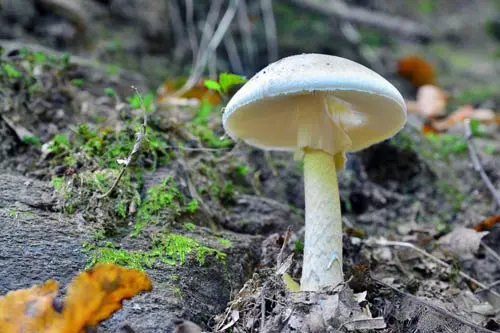
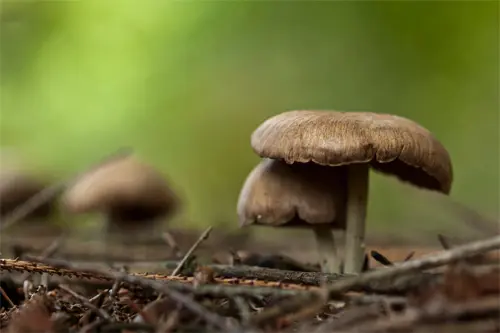
The Amanita muscaria and Amanita pantherina varieties of mushroom also have a fishy odor, and are also frequently eaten by dogs. They contain the toxic compounds ibotenic acid and muscimol, which in rare instances can cause death in dogs. Even cats, who typically don't sample mushrooms, are particularly attracted to dried Amanita muscaria and Amanita pantherina, sometimes with lethal results.
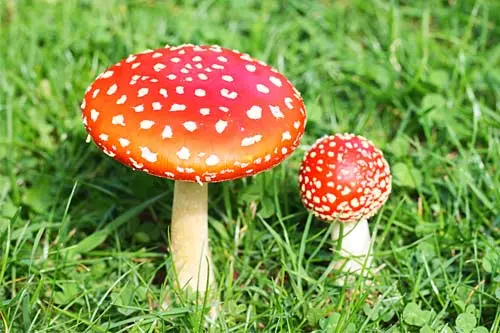
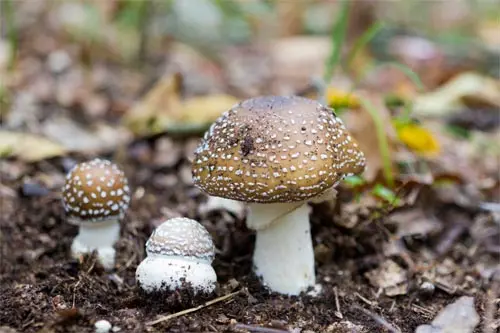
The Inocybe and Clitocybe mushrooms contain a compound called muscarine that can be lethal to dogs. Since muscarine doesn't seem to be a problem for humans, it's assumed dogs must be uniquely sensitive to it.
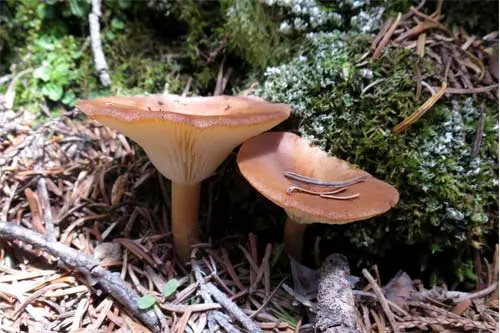
Some Scleroderma mushroom species are also toxic to dogs, but the poisonous substance has yet to be identified.
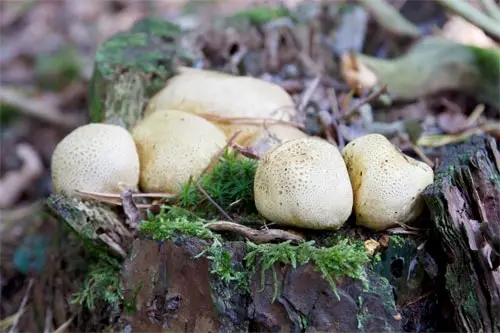
Signs of Mushroom Poisoning
Mushroom poisoning symptoms depend on the species of mushroom ingested, the specific toxin the mushroom contains and the individual animal's susceptibility. Generally speaking, mushroom poisoning has four distinct clinical syndromes, according to Dr. Charlotte Means of the ASPCA National Animal Poison Control Center:2
- Gastrointestinal (GI) irritation — This is the most common symptom and is rarely serious enough to be fatal. Vomiting and diarrhea typically occur within about six hours of ingestion. GI upset runs its course in about 24 hours and requires minimal veterinary care.
- GI upset plus muscarinic effects — Muscarinic effects include excessive drooling and tear production, which are also symptoms of carbamate and organophosphate insecticide poisoning. Pupils may be small and constricted, but the most serious sign is a significantly slowed heartbeat. This clinical syndrome usually occurs within six hours of mushroom ingestion and almost always requires veterinary care. Species of mushrooms that commonly cause this syndrome are from the genera Inocybe and Clitocybe.
- GI upset, muscarinic effects, depression, and lethargy — This clinical syndrome is characterized by severe abdominal pain and vomiting. There can also be jaundice (a yellowing of the whites of the eyes and mucus membranes), bleeding disorders, and seizures as a result of liver damage.
These symptoms occur between six and 20 hours after mushroom ingestion, and without prompt, aggressive treatment, they are often fatal. The Death Cap mushroom (Amanita phalloides) is most often the culprit in these cases. - Hallucinogenic syndrome — Illegal "street" mushrooms commonly known as magic mushrooms, blue legs or liberty caps, cause this syndrome. These are nontoxic mushrooms (the kind sold in grocery stores) that have been tainted with LSD or other illicit drugs. Pets typically find these mushrooms in someone's indoor stash, not in the yard or the woods.
Symptoms of magic mushroom ingestion can include restlessness, hallucinations, "air biting," extreme depression, staggering, muscle tremors, seizures and coma. If you suspect your pet has ingested this type of mushroom, you should get him to your veterinarian or an emergency animal clinic immediately.
In addition to the above symptoms, according to NAMA, dogs typically go into a deep coma-like sleep a few hours after eating Amanita muscaria or Amanita pantherina. Recovery is typically complete in about six hours, but can be up to 72 hours later.
If a pet has consumed Amanita muscaria or Amanita pantherina, the administration of atropine can intensify a coma-like sleep, greatly increasing the possibility of death. Tragically, misguided veterinarians sometimes euthanize dogs in deep sleep. In most cases, dogs do recover, so patience must be exercised.
Treatment Options for Mushroom Poisoning in Pets
Treatment for mushroom intoxication depends on the symptoms, and is focused on stabilizing your pet, decontamination and managing any clinical signs that may develop. Decontamination includes inducing vomiting to remove any remnants of the mushroom from the stomach. The next step is typically administration of activated charcoal to absorb any remaining toxins.
Many holistic veterinarians and MDs have had good results decreasing mushroom toxicosis with homeopathic remedies.3 The remedy selected should be based on the animal's symptoms. Milk thistle has also proven to be beneficial for human mushroom poisoning and shows promise for use in veterinary medicine as well.4
If your pet continues to show signs of toxicity, the veterinary staff will try to identify the type of mushroom ingested by contacting a mycologist in the area. NAMA provides a list of volunteer mushroom identification consultants. It's often impossible to predict the outcome for your pet until the mushroom is identified.
The need to identify the specific mushroom your pet ingested is why it's important to bring any uneaten mushrooms with you to the vet or emergency animal clinic. Wrap them in a paper towel and place them in a paper (not plastic) bag. If there will be any delay between wrapping the mushrooms and leaving for your vet's office, place the mushrooms in the refrigerator and mark the bag "Do not eat!"
Preventing Mushroom Poisoning
Mushrooms in yards (yours and your neighbors') should be removed promptly before neighborhood pets have a chance to notice them. As a general rule, veterinarians and pet poison experts consider all mushroom ingestions in pets toxic unless a quick and accurate identification of the mushroom can be made.
If you know or suspect your pet has eaten a mushroom, immediately contact your veterinarian, the nearest emergency animal clinic, or the 24/7 Pet Poison Helpline at 855-764-7661. If your pet throws up or poops, collect a sample, place it in a plastic bag and bring it with you.
Mushroom Fear Is Real
Mushrooms are interesting because they evoke both amazement and fear from most pet owners. Widespread misinformation on the internet stating all mushrooms are poisonous for pets has resulted in many pet owners denying their pets the amazing healing properties of medicinal mushrooms.
The same species of mushrooms that are medicinal for humans are also medicinal for pets, and the species that should be avoided for humans should also be avoided for pets. Dispelling mushroom myths is important to me because the health benefits of certain mushrooms can be lifesaving for many pets.











